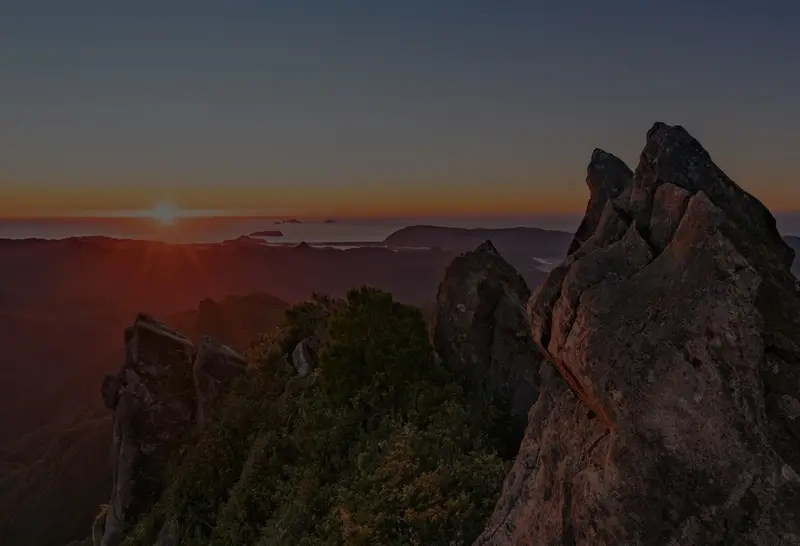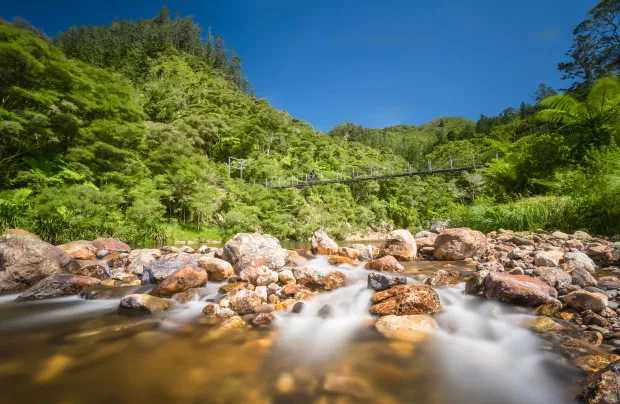Walking and hiking: The Kauaeranga Valley provides an extensive variety of walking for all abilities. There are lots of different walks ranging anywhere from 15 minutes to 8 hours and overnight, being the Pinncales. For detailed track information, collect a DOC brochure from any of The Coromandel Information Centres or the Kauaeranga DOC Visitor Centre up the valley, which is excellent.
Horse riding: The Hotoritori area is available for horse riding although tracks can become overgrown when not in regular use. Riders can use the forest access roads or follow a track along the ridge to Mangarehu.
Mountain biking: Although there are tracks designated for mountain biking behind the Hotoritori Campground, 2 km past the Kauaeranga Visitor Centre, the track is quite rugged. Riders should check with Visitor Centre staff for updates on the prevailing conditions before setting out.
Swimming: There are many swimming spots along the Kauaeranga River, and you can stop anywhere up the Kauaeranga Valley and access the river. Hoffmans Pool is very popular. Tracks opposite Hotoritori Campground go down to some good swimming holes. Also, just down from Shag Stream Campground there is a good swimming (and fishing) spot, with a sandy bank which is good for families.
Dogs: You may bring your dog to the Hotoritori and Booms Flat campgrounds but they are strictly prohibited at all other campgrounds. Dogs on a leash are permitted on most walking tracks in the Valley but are not permitted on the Kauaeranga Kauri Trail, the Pinnacles Track or at the Pinnacles Hut. No other domestic animals are allowed except for horses on the horse riding trail.
Climbing: The rock outcrop at Edwards Lookout is a favourite spot for abseiling.
History: The Kauaeranga Valley was once filled with magnificent Kauri trees. From the 1870s to the 1920s, this area was extensively logged for its Kauri. At first the easier slopes near Thames were logged and the kauri milled locally. During the 1890s the kauri timber industry slumped and many local mills closed down. Around 1910 the industry revived and plans were made to extract the remaining stands of timber in the rugged area above Kauaeranga Gorge - the area now traversed by the Kauri Trail. In the main river valley and its tributaries, contractors worked from bush camps supplied by packhorse track. Using axe, saw and timber jack, they felled thousands of massive trees, which were trimmed, cut to length and transported to streams, and rivers via log chutes or along skidded roads. Dams were built in the valley and often tripped in sequence to send timber down the river. Tramlines were also used to move logs. The most spectacular example being the Billygoat tramline, which was built to bypass the Billygoat Falls. Logs were damaged beyond use going over the falls so an alternative means of transport was developed to get the logs to market. Part of the Kauri Trail walk takes in remnants of the old tramline. By 1928 most of the kauri had been logged! The tramline was pulled up and the dams, bush camps and other relics fell into ruin as Kauaeranga forests slowly recovered. In 1970 the remaining native forests of the Kauaeranga were protected as part of the Coromandel Forest Park.
Where to Find Us
Contact
Location
Thames
New Zealand


